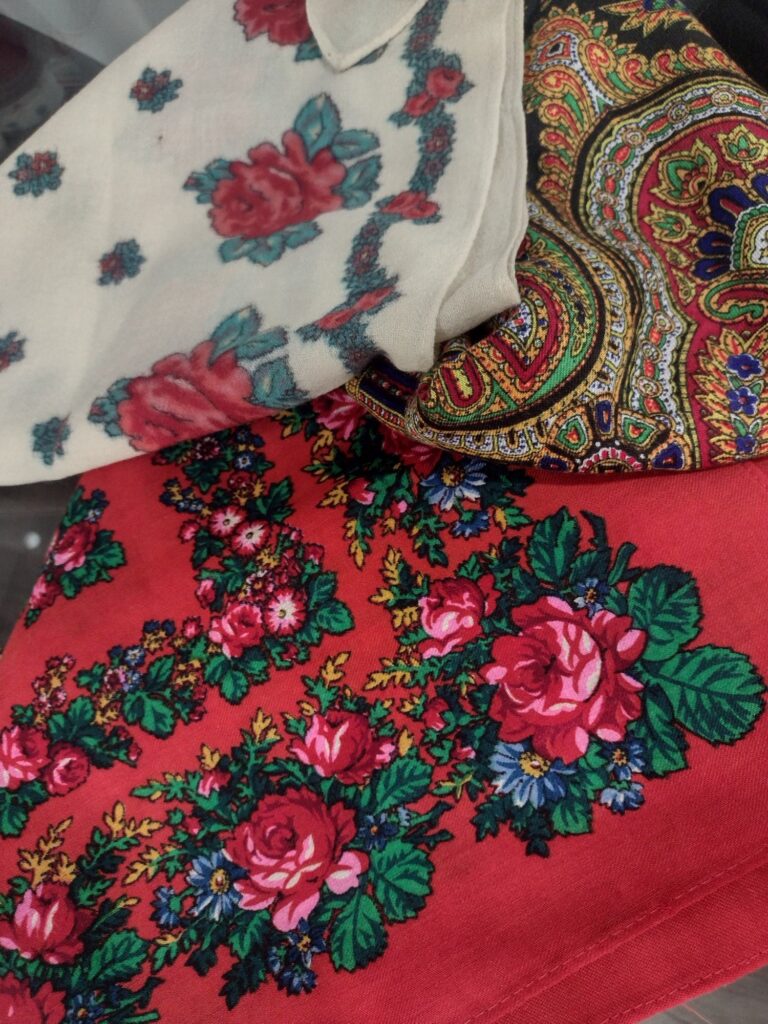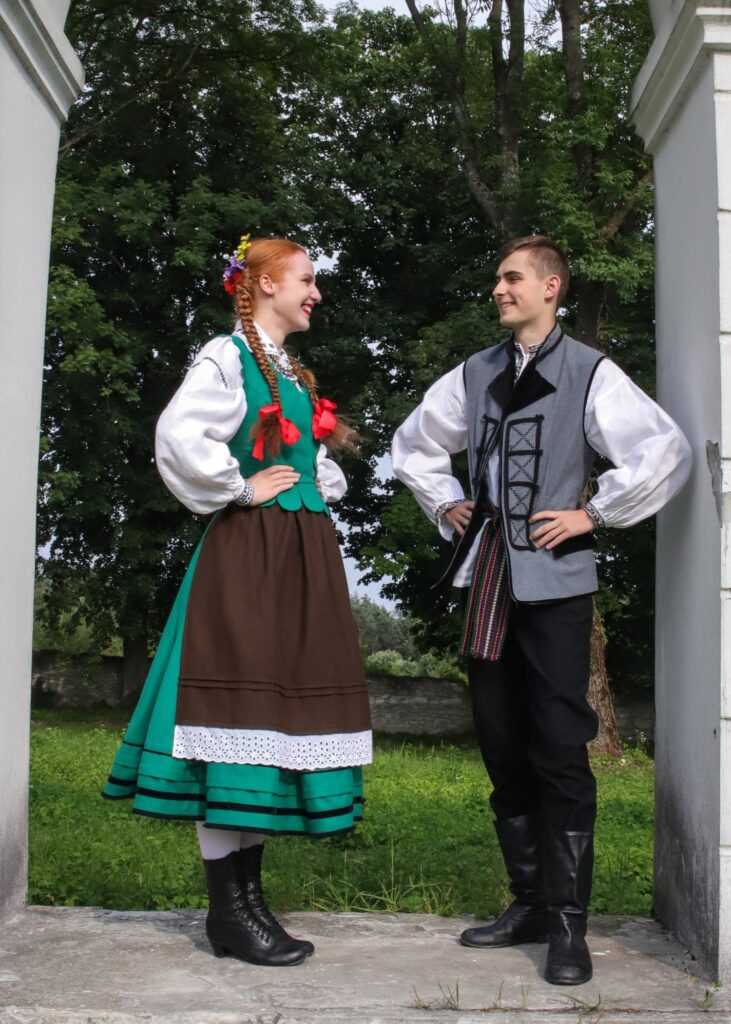The costume from our region is referred to as the Hrubieszów-Tomaszów costume, and its occurrence within the borders of the Second Polish Republic stretched across the south-eastern areas of the Lublin voivodship, the south-western areas of the Volhynia voivodship and the north-eastern areas of the Lwów voivodship. The most important feature of this costume is its bicultural character – apart from minor differences, it bears the characteristic features of Polish and Ukrainian groups.
A festive outfit was most often owned by just one. It was worn only on the most important festivals – annual or family holidays – and for Sunday Mass. It was considerably more ornate than everyday clothes and had additional elements not used on a daily basis. Both men’s and women’s shirts and bibs were decorated with cross-stitch or plain embroidery. Skirts and wardrobes were sometimes trimmed with ribbons, lace or brush (finishing of skirts with fine woollen threads). Woollen skirts were worn in winter. Additional elements of women’s costume were kaftans, waistcoats, saks, kurtis, syrolaks, kabats. These were a variety of outer garments, varying in cut. Those with long sleeves were worn by married women, while those without sleeves were worn by ladies. They were sewn from grey-brown or white worsted cloth, black velvet, plain woollen fabrics, flannel, barchans or percale. They were all decorated – sometimes only with glass buttons, but most often with ribbons or embroidery. In the men’s costume, in addition to the embroidered shirt, a distinctive feature was the woven, wide pojas, which replaced the hemp cord worn every day, for girding the shirt. Men used two types of kaftans – either of white linen self fabric or of woven cloth. They were decorated with characteristic embroideries in the shape of squares with crossed diagonals. Additional decoration was a lacing of coloured strings and appliqués of blue or black fabric. As outer garments they wore linen cloths in summer and woollen dresses in winter1. These garments were identical for men and women. On festive days, adults wore shoes – men leather jackboots, women lace-up boots. Poorer residents and children went barefoot or wore shoes made of lime bast. Men wore straw hats in summer, while in winter they wore various fur hats and, in later years, maciejówka hats. The headgear of married women was a specially tied cap. It was based on a wooden hoop onto which hair was wound. Then it was covered with a cap with a white mesh bottom and a white strip of linen on the edge, and on top of that there was a shawl (a piece of self-made linen, about 80 cm wide and 2 to 3 m long), and in later years a headscarf, which was crossed under the chin in a characteristic way, and then tied at the nape of the neck. Beads were used to complete the women’s costume. The type of beads, the number of strings and the size of the beads determined a woman’s wealth. Natural beads were the most prized, with multi-coloured glass beads being the most popular.


1 E. Piskorz – Branekova, Tradycyjne stroje i hafty hrubieszowsko – tomaszowskie, Zamość, 2011, s.14-35
